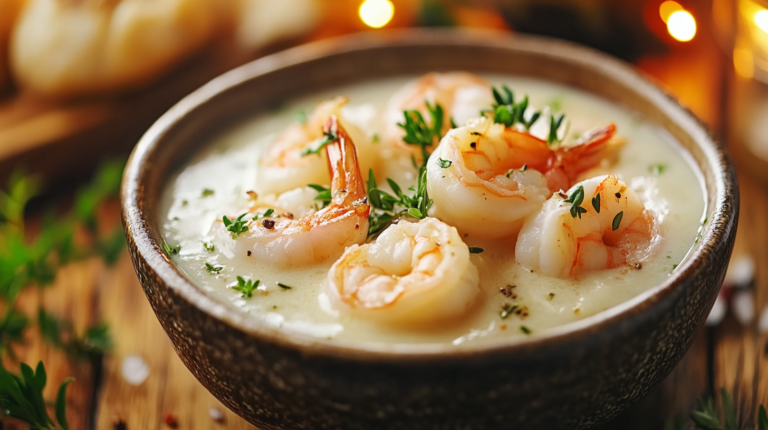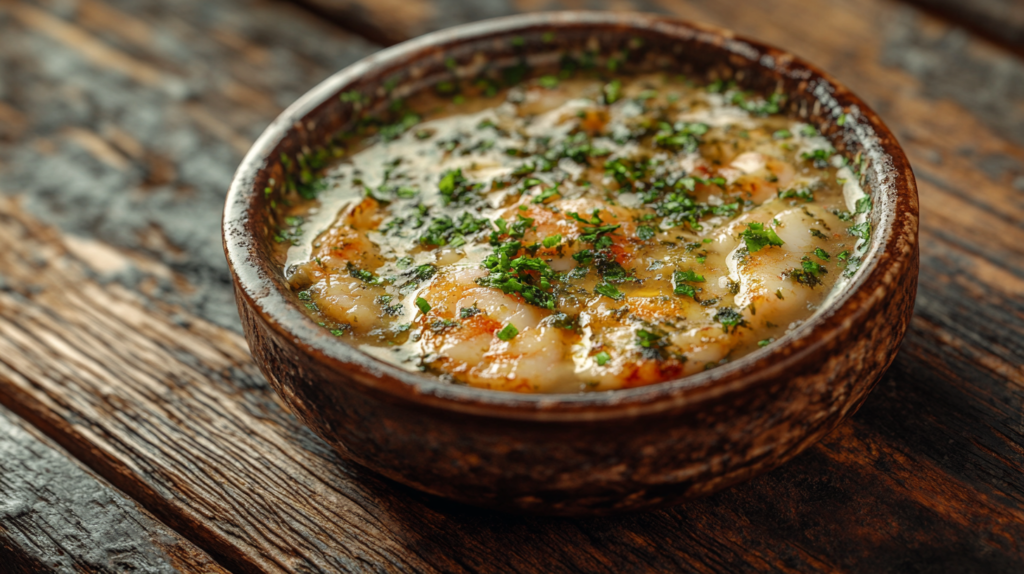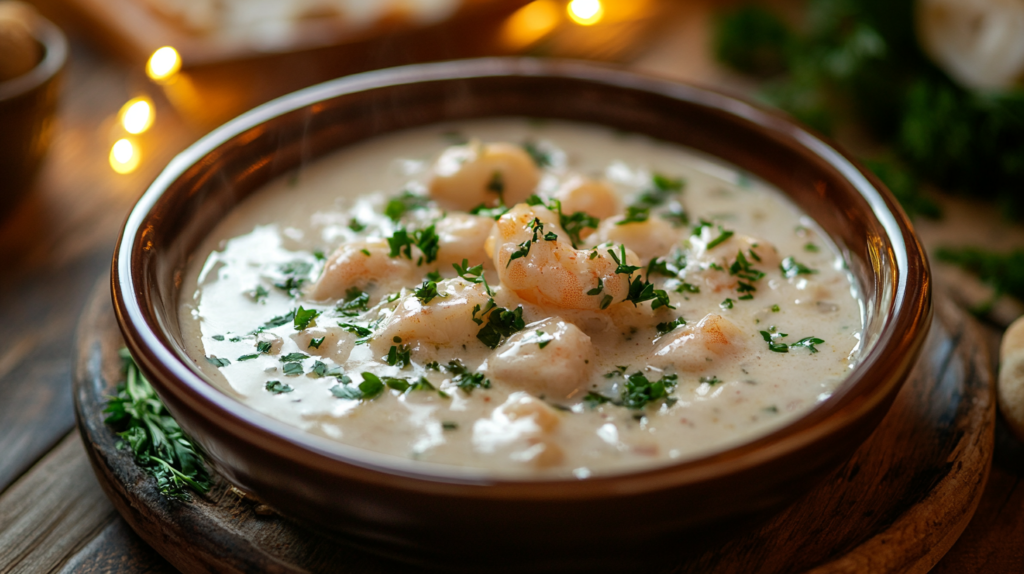
Seafood sauce is a fundamental component that can transform your seafood dishes from ordinary to gourmet. It is the perfect finishing touch that ties together the flavors and elevates the overall dining experience. The right consistency ensures that the sauce clings effortlessly to shrimp, scallops, or fish, enriching each bite with complementary textures and tastes. Whether it’s a creamy garlic butter sauce or a spicy tomato-based one, achieving the proper thickness is key to presenting a restaurant-quality dish at home.
In this comprehensive guide, we will explore a variety of methods to thicken seafood sauce, from traditional techniques to modern innovations. Additionally, we’ll uncover common mistakes to avoid, provide practical tips for achieving consistent results, and include recipe examples to inspire your next culinary adventure. With the right approach, you can master the art of preparing sauces that are not only flavorful but also visually stunning, enhancing the appeal of every seafood meal.
Why Seafood Sauces Become Thin
High Moisture Content in Seafood
Seafood, such as shrimp, scallops, or mussels, releases water during cooking, which can dilute the seafood sauce. This is due to their naturally high moisture content. To prevent this, ensure the seafood is patted dry before cooking and avoid overcrowding the pan. Managing the moisture ensures the sauce retains its thickness and doesn’t become watery.
Excess Liquid in Recipes
Adding too much wine, broth, or cream can lead to a runny seafood sauce. Accurate measurements are essential to achieve the desired consistency. If your sauce is too thin, you can fix it by adding a cornstarch slurry, which effectively counteracts excess liquid. You can learn more about this technique here.
Inadequate Reduction Time
One of the most reliable methods to thicken a seafood sauce is to allow it to simmer uncovered. This technique, called reduction, evaporates excess water and concentrates the sauce’s flavors. If you rush this process, the sauce may remain too thin. Remember, patience is key to achieving a rich and velvety consistency.

Table of Contents
Table of Contents
Why Seafood Sauces Become Thin
High Moisture Content in Seafood
Seafood, such as shrimp, scallops, or mussels, releases water during cooking, which can dilute the seafood sauce. This is due to their naturally high moisture content. To prevent this, ensure the seafood is patted dry before cooking and avoid overcrowding the pan. Managing the moisture ensures the sauce retains its thickness and doesn’t become watery.
Excess Liquid in Recipes
Adding too much wine, broth, or cream can lead to a runny seafood sauce. Accurate measurements are essential to achieve the desired consistency. If your sauce is too thin, you can fix it by adding a cornstarch slurry, which effectively counteracts excess liquid. You can learn more about this technique here.
Inadequate Reduction Time
One of the most reliable methods to thicken a seafood sauce is to allow it to simmer uncovered. This technique, called reduction, evaporates excess water and concentrates the sauce’s flavors. If you rush this process, the sauce may remain too thin. Remember, patience is key to achieving a rich and velvety consistency.
Traditional Methods to Thicken Seafood Sauce
Cornstarch Slurry
A cornstarch slurry is one of the simplest ways to thicken seafood sauce. Follow these steps:
- Mix 1 tablespoon of cornstarch with 2 tablespoons of cold water to form a slurry.
- Gradually add the slurry to your sauce while stirring continuously.
- Bring the sauce to a gentle boil to activate the thickening properties of cornstarch.
This method is ideal for clear or translucent sauces, ensuring a smooth and glossy finish.
Flour-Based Roux
A roux is a classic French technique often used to thicken seafood sauces. To make a roux:
- Melt equal parts butter and flour in a pan, stirring until a smooth paste forms.
- Cook the roux for 1-2 minutes to eliminate the raw flour taste.
- Gradually whisk in your sauce base, such as broth or cream, until the desired thickness is achieved.
This method adds a rich, creamy texture to the sauce, making it perfect for dishes like seafood bisque.
Modern Thickening Techniques for Seafood Sauce
Xanthan Gum
Xanthan gum is an excellent thickener for seafood sauces that works in small quantities. It is especially useful for gluten-free recipes. Here’s how to use it:
- Sprinkle a small amount of xanthan gum over the sauce while whisking vigorously.
- Unlike flour or cornstarch, it doesn’t require heat to activate and is great for cold sauces.
Arrowroot and Tapioca Starch
Arrowroot and tapioca starch are ideal alternatives to cornstarch for thickening seafood sauces. These starches provide a glossy finish and work well with acidic ingredients. To use them:
- Mix 1 teaspoon of starch with 2 teaspoons of cold water to form a slurry.
- Stir the slurry into the simmering sauce until the desired consistency is reached.
Natural and Creative Ways to Thicken Seafood Sauce
Pureed Vegetables
Pureeing vegetables like onions, carrots, or tomatoes is a natural way to thicken seafood sauces. This method adds body to the sauce while enhancing its flavor. To use pureed vegetables:
- Roast or sauté the vegetables for additional depth of flavor.
- Blend them into a smooth puree and mix them into the sauce.
Adding Cream or Cheese
Adding heavy cream or grated cheese is a luxurious way to thicken seafood sauces. These ingredients not only improve the texture but also enrich the sauce’s flavor. For example, Alfredo sauce benefits from cream and Parmesan cheese. For inspiration, check out this Alfredo recipe.

Common Mistakes When Thickening Seafood Sauce
Over-Thickening
Adding too much thickener can drastically change the texture of your sauce, making it overly gummy or paste-like. This issue can overpower the delicate balance of flavors in a seafood dish, detracting from the overall experience. If you find your sauce too thick, the solution is straightforward: dilute it with a bit of liquid. Depending on your recipe, you can use seafood stock, broth, or cream to gently bring the sauce back to a desirable consistency. Be sure to add the liquid incrementally, stirring thoroughly after each addition to maintain balance.
Incorrect Mixing of Thickeners
One of the most common mistakes is adding dry thickeners like cornstarch or flour directly into the sauce. This often leads to unpleasant lumps that can ruin the texture and visual appeal of your dish. Always mix your thickener with cold water or another liquid to form a smooth slurry before incorporating it into the sauce. Gradually add the slurry while stirring to ensure even distribution. This method guarantees a consistent, lump-free texture while allowing the thickener to blend seamlessly with the sauce.
Using the Wrong Thickener
Choosing the appropriate thickener for your sauce type is crucial. Cornstarch, for example, works best for clear or translucent sauces, as it provides a glossy finish without altering the flavor significantly. On the other hand, a roux made from butter and flour is ideal for creamy or hearty sauces, lending a rich, velvety texture. Using the wrong thickener can result in a mismatch of flavor, texture, or appearance. Take the time to understand the characteristics of each thickener and match it to your sauce’s specific needs for the best results.
Recipe Examples Using Seafood Sauce
Creamy Garlic Butter Seafood Sauce
Ingredients:
- 2 tbsp butter
- 3 garlic cloves, minced
- 1 cup heavy cream
- 1 tbsp cornstarch slurry
Preparation:
- Melt butter in a pan and sauté garlic until fragrant.
- Add heavy cream and bring to a gentle simmer.
- Stir in the cornstarch slurry and continue cooking until the seafood sauce thickens.
Spicy Tomato-Based Seafood Sauce
Ingredients:
- 1 tbsp olive oil
- 1 small onion, diced
- 1 cup crushed tomatoes
- 1 tsp arrowroot slurry
Preparation:
- Heat olive oil and sauté onions until soft.
- Add crushed tomatoes and let simmer for 10 minutes.
- Stir in the arrowroot slurry and mix until the sauce thickens.

Frequently Asked Questions (FAQs)
What is the best way to thicken a seafood boil sauce?
A cornstarch slurry is one of the quickest and most effective ways to thicken seafood boil sauces. To make it, mix one tablespoon of cornstarch with two tablespoons of cold water until smooth. Gradually stir the slurry into the simmering sauce, ensuring that it is evenly distributed. Allow the sauce to cook for a few more minutes to activate the cornstarch, which will result in a thicker, glossy consistency. This method is perfect for achieving a smooth sauce without altering the flavor.
Can you thicken seafood sauce without flour?
Yes, there are several excellent alternatives to flour for thickening seafood sauce. Xanthan gum is a popular choice for gluten-free recipes, requiring only a small amount to achieve the desired thickness. Another option is arrowroot or tapioca starch, which works particularly well in acidic sauces like tomato-based ones. Pureed vegetables, such as roasted onions or carrots, can also add body and flavor to your sauce naturally. These methods allow you to tailor your sauce to dietary preferences without compromising texture or taste.
How do I thicken a seafood bisque?
A roux made from equal parts butter and flour is the traditional way to thicken seafood bisque. To use this method, cook the roux for a few minutes before gradually whisking in the liquid ingredients of the bisque, such as broth or cream. For a richer and silkier texture, consider adding heavy cream toward the end of cooking. This combination not only thickens the bisque but also enhances its luxurious consistency and flavor, making it a standout dish on any menu.
Can you over-thicken a seafood sauce?
Yes, over-thickening can result in an unpleasant, gummy texture that detracts from the dish. If this happens, don’t worry—it’s easy to fix. Simply dilute the sauce by adding a small amount of broth, cream, or other liquid components used in the recipe. Stir thoroughly and gradually until the desired consistency is restored. To avoid this issue in the future, add thickeners incrementally and assess the sauce’s texture after each addition.
Conclusion
Mastering the art of thickening seafood sauce ensures that your seafood dishes are flavorful, visually appealing, and memorable. Whether you’re hosting an elegant dinner party or preparing a comforting family meal, a perfectly thickened sauce can make all the difference. The ability to create sauces that not only enhance the taste but also elevate the presentation of your dishes is a skill that transforms home cooking into a gourmet experience.
From traditional methods like roux, which provide a rich and creamy texture, to modern alternatives such as xanthan gum, which cater to dietary needs, each technique offers a unique approach to achieving culinary perfection. Experiment with these tips, and don’t hesitate to combine methods to find what works best for your recipes. With time and practice, you can confidently craft restaurant-quality sauces that leave a lasting impression on your guests.
For additional inspiration, explore our seafood recipe collection and discover new ways to pair your perfected sauces with flavorful dishes. Whether you’re a novice cook or an experienced chef, the journey to mastering seafood sauce thickening techniques is one worth savoring.
